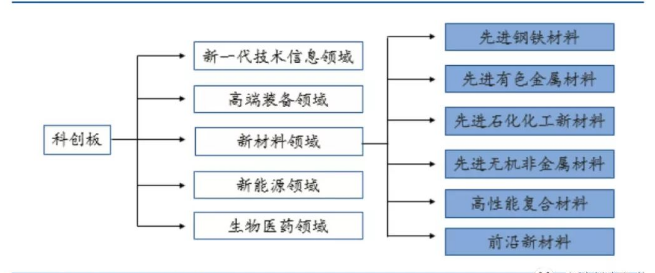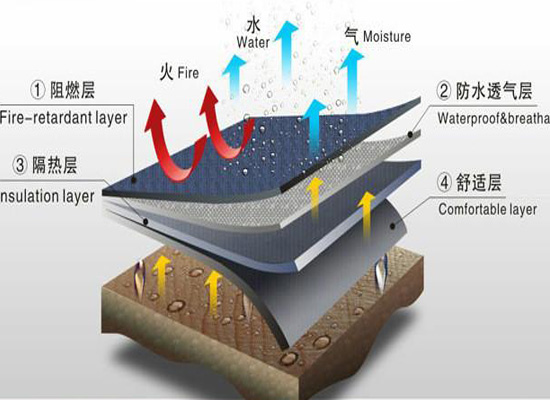The new materials industry welcomes new opportunities for development!
The new materials industry welcomes new opportunities for development!
1. Accelerated development of new materials industry
1.1 There is a long way to go to replace domestically produced new materials
The new materials industry is growing rapidly, but key materials still rely on imports. The new materials industry is one of my country’s seven strategic emerging industries and is the industrial foundation for the transformation and upgrading of the entire manufacturing industry. Driven by both national policies and downstream markets, my country’s new materials industry has maintained a rapid growth trend. my country’s new materials field has been growing at a CAGR of more than 24% for many years, and the market size has also grown from 0.6 trillion yuan in 2010 to 3.1 trillion yuan in 2017, much higher than the global average growth rate of 10%. It is expected that By 2020, the size of my country’s new materials market will reach 6 trillion. Among them, the market size of new chemical materials has also grown from 170 billion yuan in 2010 to 460 billion yuan in 2017, with a CAGR of more than 16%. During this period, my country’s new material research and development innovation level has continued to improve, and great progress has been made in superconductors, graphene, liquid metal, etc., especially in the fields of organic silicon, rare earth functional materials, photovoltaic materials, energy storage materials, etc., ranking among the best in the world, occupying the leading position in the world. Larger market share. However, compared with developed countries, my country still has a large gap in the field of new materials. According to the survey results of 130 key materials by the Ministry of Industry and Information Technology, my country still has gaps in 32% of the key materials, and 52% still rely on imports. For some materials, such as high-purity polysilicon, my country is completely dependent on imports. There are also many materials such as high-performance biological materials and other large-scale materials. Partially dependent on imports, the need for localization of new materials is very urgent.

The new materials industry is one of the key areas supported by the Science and Technology Innovation Board. Sponsors are required to give priority to recommending scientific and technological innovation enterprises in high-tech industries and strategic emerging industries such as new generation information technology, high-end equipment, new materials, new energy, energy conservation and environmental protection, and biomedicine. The new materials field mainly includes advanced steel materials, advanced non-ferrous metals, etc. Metal materials, advanced petrochemical and chemical new materials, advanced inorganic non-metallic materials, high-performance composite materials, cutting-edge new materials and related technical services, etc.
With strong policy support, the market industry has broad prospects. Due to the large supply gap in my country’s key materials field, the country has successively promulgated relevant policies and plans to vigorously develop the new materials industry. In 2015, the State Council released the programmatic document “Made in China 2025” for the transformation of my country’s manufacturing industry. The new materials industry has received corresponding attention as a core area and important support for the transformation of the manufacturing industry. The subsequently released “Made in China 2025 Technology Roadmap for Key Areas” is an annotation and refinement of “Made in China 2025”. The “Roadmap” clarifies that new materials will be one of the ten key areas, and the new materials industry will be divided into three key directions: advanced basic materials, key strategic materials and cutting-edge new materials, and will be refined in these three directions. The materials that need specific development and the specific goals that need to be achieved in 2020 and 2025 for the development of this material are identified. Many of them are new chemical materials. Such as advanced petrochemical basic materials among advanced basic materials, advanced light industrial materials, advanced textile materials and high-performance fibers and composite materials among key strategic materials. He also pointed out that the current situation of overcapacity in my country’s basic materials industry and the inability to be completely self-sufficient in high-end materials needs to be solved through the development of new materials.

In December 2016, the General Office of the State Council established a national new materials industry development leading group composed of 48 top materials experts to hold regular meetings to discuss and implement policies for the new materials industry. In order to clarify specific tasks, the State Council issued the “13th Five-Year Plan for the Development of National Strategic Emerging Industries” in the same month. The core requirements in the “13th Five-Year Plan” include improving the basic support capabilities of new materials and adapting to the high demand for new materials. The development trend of performance, multi-function and green is guided by the needs of emerging industries and major engineering construction, improving the application level of new materials and integrating new materials into the high-end manufacturing supply chain. Emphasis is placed on developing applications for new materials. New materials originate from the upstream of the entire industrial chain and extend widely to downstream industries, such as construction, automobiles, computers, logistics, and aerospace, which can all be used as areas for new chemical material applications. Therefore, the application and integration of new materials into various existing downstream fields will be a major trend in the development of new materials in China. The “Thirteenth Five-Year Plan” also sets 2020 as the first target time point for the development of new materials in my country, striving to enable several new material varieties to enter the global supply chain by then, and the self-sufficiency rate of major key materials to exceed 70%.
In January 2017, the “New Materials Industry Development Guide” issued by the Ministry of Industry and Information Technology and other four ministries and commissions, as a programmatic document to guide the development of new materials during the “13th Five-Year Plan” period, more specifically proposed nine key tasks. Among them, the new chemical materials highlighted include high-end polyolefins, special synthetic rubbers, engineering plastics, advanced textile materials, high-performance carbon fibers, aramid fibers, etc. in �Thanks to successive favorable policies, the scale of investment in the field of new materials has increased significantly.
In 2018, the Ministry of Industry and Information Technology and the Ministry of Finance released the “Construction Plan for the National New Material Production and Application Demonstration Platform” and the “Construction Plan for the National New Material Testing and Evaluation Platform”. The national new material production and application demonstration platform will be jointly established by new material production companies and application companies. , absorb relevant units in the industrial chain, connect with existing national science and technology innovation bases, and strive to establish about 20 in key areas by 2020.

Under the guidance of policies, the scale of investment in the new materials field has increased significantly. The amount of industry investment has also increased from 1.75 billion yuan in 2013 to 12.57 billion yuan in 2017, with a CAGR of 48.4%. The number of investments has also increased from 72 in 2013 to 129. rise.







